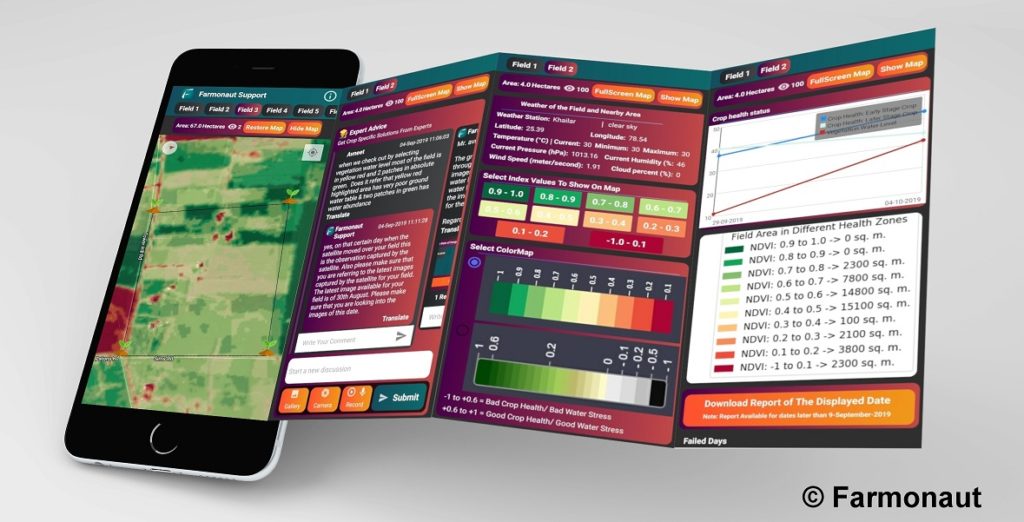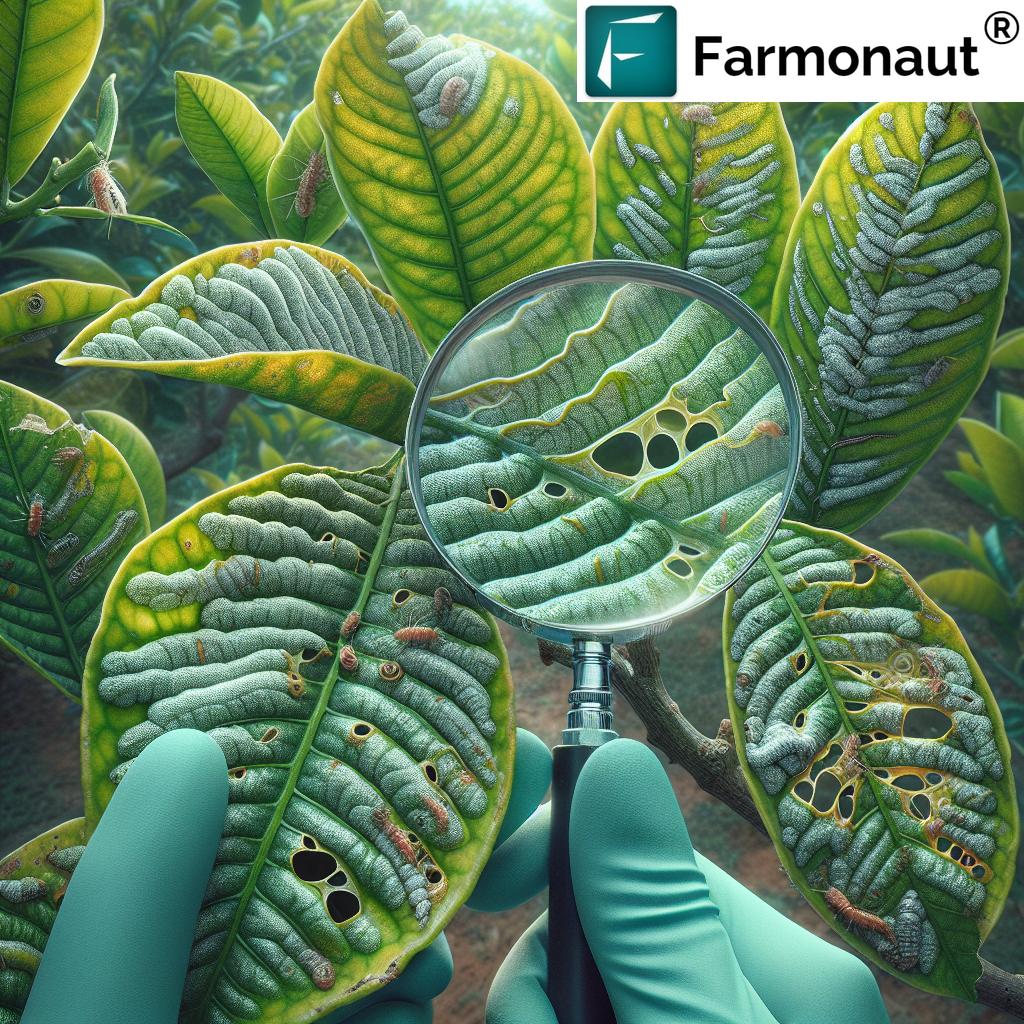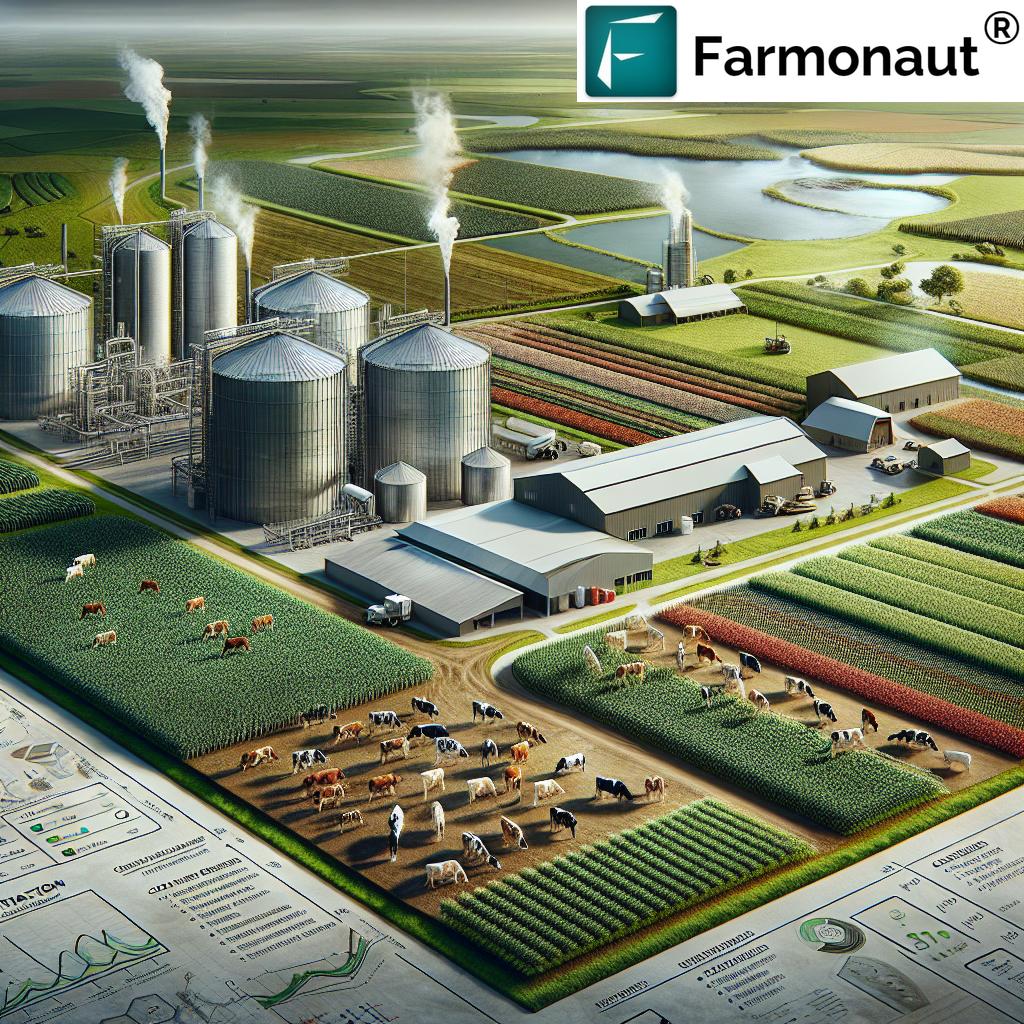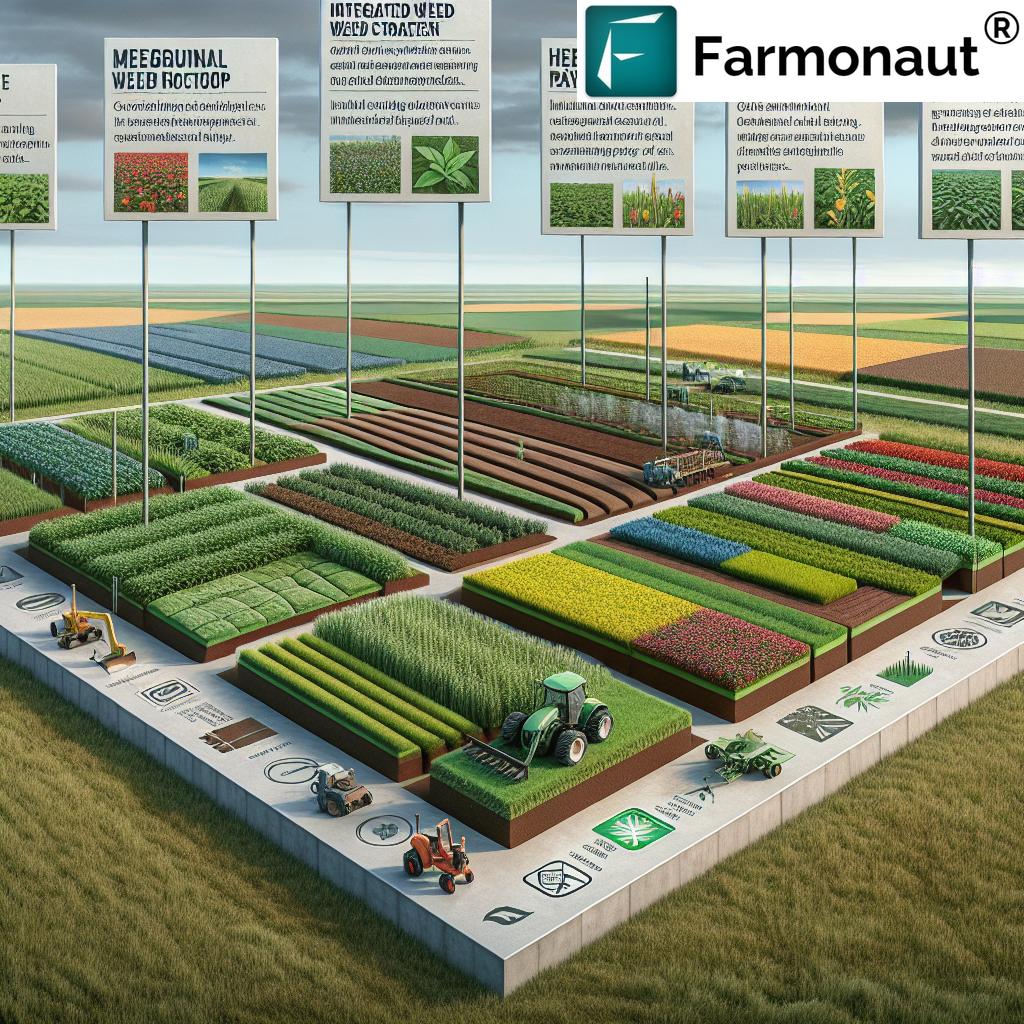Farming with Biologicals: 7 Ways to Boost Yields
“Biologicals can increase crop yields by up to 20% while reducing chemical pesticide use by 30%.”
“Integrating biologicals improves soil organic matter by 15%, enhancing long-term farm sustainability and productivity.”
Farming with Biologicals: A Sustainable Approach to Agriculture
The modern agricultural sector is experiencing a profound transformation as environmental pressures, soil degradation, and the urgent need for sustainability drive the adoption of innovative practices. Among the most promising solutions is integrating biologicals into farming. This environmentally friendly agriculture approach focuses on harnessing natural organisms and substances to enhance crop yields sustainably, improve soil health, manage pests and diseases naturally, and reduce reliance on synthetic chemicals.
As the global demand for food rises alongside heightened awareness of the environmental impact of traditional farming practices, biologicals in agriculture represent a pivotal advancement that aligns productivity goals with ecological responsibility. By emphasizing sustainable farming practices, biologicals offer farmers a way to improve resilience, foster biodiversity, and create healthier and more productive agricultural systems for the future.
Understanding Agricultural Biologicals
What are biologicals in agriculture? Agricultural biologicals encompass a diverse range of natural organisms and substances used to promote plant health, bolster crop growth, and manage pests and diseases in agriculture. Unlike synthetic chemicals, biologicals are derived from living sources such as bacteria, fungi, plant extracts, or other beneficial microorganisms.
Categories of Biologicals: The Pillars of Natural Farming Solutions
- Biopesticides: Natural or biologically-inspired substances (often sourced from bacteria, fungi, or plant extracts) used to control pests and diseases with minimal environmental impact. They offer alternative modes of action that reduce the risk of resistance and are safer for beneficial species in the ecosystem.
- Biofertilizers: Microorganisms (like Rhizobium bacteria or mycorrhizal fungi) that enhance nutrient availability and fertility by improving soil health naturally. They often fix nitrogen, solubilize phosphorus, or mobilize other micro-nutrients in the soil, fostering sustainable plant growth.
- Biostimulants: Compounds (either microbial or derived from natural sources) that stimulate plant development and root efficiency. These boost the plant’s ability to uptake nutrients, increase resilience to stress conditions such as drought or salinity, and promote overall vigor and yield.
Why are Biologicals Important for Sustainable Farming Practices?
- Biologicals provide a sustainable alternative to conventional, synthetic agrochemicals, improving soil health naturally and reducing negative environmental effects.
- They bolster biodiversity in the agroecosystem, supporting beneficial organisms while targeting only the intended pests or diseases.
- They are an essential component of integrated, environmentally friendly agriculture strategies designed to ensure long-term productivity, resilience, and farm profitability.
Key Benefits of Integrating Biologicals into Farming
Integrating biologicals into traditional farming systems brings an array of agronomic, environmental, and economic advantages, making it a cornerstone of sustainable farming practices globally.
1. Enhanced Soil Health and Fertility
Biologicals like biofertilizers and biostimulants work by rejuvenating soil health naturally. They introduce beneficial microbes that decompose organic matter, increase soil fertility, enhance nutrient cycling, and improve soil structure and water retention. Over time, this boosts the productivity and resiliency of farming systems.
2. Reduced Chemical Inputs and Environmental Impact
Adopting biologicals directly reduces reliance on synthetic chemicals. This leads to lower chemical residues on produce, diminished environmental toxicity, less pollution, and safer water sources.
By reducing chemical inputs in farming, biologicals also slow the development of pest resistance to pesticides and enhance farmer compliance with export and food safety standards.
3. Improved Crop Productivity and Yields
Through enhanced nutrient uptake and disease suppression, biologicals help increase crop yields sustainably. Biostimulants especially promote robust root and shoot growth, support plant resilience to stress conditions like drought or heat, and ultimately maximize harvest potential.
4. Sustainable Pest and Disease Management
Biopesticides provide natural pest and disease management with new modes of action. They are less likely to select for resistant pest populations and can be rotated or mixed with traditional chemicals as part of an integrated pest management (IPM) system, further reducing the risk of resistance and environmental contamination.
5. Environmental and Biodiversity Benefits
Biologicals tend to be species-specific, meaning they target pests or pathogens precisely while leaving non-target and beneficial organisms unharmed. This approach is a major step forward for supporting biodiversity in agroecosystems and creating more resilient systems that can adapt to environmental shifts.
6. Economic Advantages
Although some biologicals may require a slightly higher initial investment, the long-term cost savings are substantial due to reduced input requirements and enhanced yields. The market demand for residue-free, sustainably produced crops also opens up new opportunities and premium prices for forward-thinking farmers who are early adopters.
7. Alignment with Consumer and Market Trends
Consumers and global food brands are increasingly seeking provenance-tracked, ethically produced ingredients. Farmers who embrace biologicals can utilize blockchain-based product traceability (learn about Farmonaut’s traceability solutions) to differentiate themselves and capture new market shares.
“Biologicals can increase crop yields by up to 20% while reducing chemical pesticide use by 30%.”
“Integrating biologicals improves soil organic matter by 15%, enhancing long-term farm sustainability and productivity.”
Farming with Biologicals: 7 Sustainable Approaches to Boost Yields
Let’s explore seven key approaches for implementing biologicals to enhance crop yields sustainably while building resilient and productive agricultural systems.
1. Biofertilizers for Crop Growth
Biofertilizers are living microorganisms (notably Rhizobium, Azotobacter, Azospirillum, phosphate-solubilizing bacteria, and mycorrhizal fungi) that, when applied to soil or plants, enhance nutrient availability and uptake. They play a crucial role in nitrogen fixation, phosphorus solubilization, and promoting nutrient cycling in depleted soils.
- Reduce need for chemical nitrogen or phosphorus fertilizers.
- Promote soil fertility and build organic matter long-term.
- Support root development and plant resilience to environmental stress.
2. Biopesticides for Natural Pest and Disease Management
Biopesticides are derived from natural sources (bacteria, fungi, plant extracts) and are specifically designed to target pests or pathogens while minimizing harm to beneficial species and the environment.
- Provide new modes of action — reducing pest resistance compared to conventional pesticides.
- Lower the chemical load on crops, increasing export opportunities.
- Can be integrated into IPM strategies for environmentally friendly agriculture.
Benefits of Biopesticides also include minimizing negative environmental impacts and residual toxicity on food products.
3. Mycorrhizal Fungi: Enhancing Soil Health and Plant Resilience
Mycorrhizal fungi form mutualistic relationships with plant roots. They extend the effective root area, increasing the plant’s access to water and soil nutrients (especially phosphorus). Mycorrhization improves drought tolerance, accelerates plant growth, and strengthens resistance to soil-borne pathogens.
- Essential for improving soil health naturally and fostering soil structure.
- Critical in restoring degraded soils in sustainable farming practices.
4. Plant Growth-Promoting Rhizobacteria (PGPR)
These are beneficial bacteria living in close proximity to roots. PGPR can fix nitrogen, enhance phosphate uptake, produce plant hormones, and protect against pathogens—directly boosting crop growth and productivity.
- Some PGPR strains enhance nutrient uptake efficiency and build resilient root systems.
- They help plants tolerate abiotic stress, reducing crop losses from drought, heat, or salinity.
5. Biostimulants for Enhanced Crop Performance
Biostimulants include microbial inoculants, seaweed extracts, humic substances, amino acids, and more. They trigger natural plant processes that improve nutrient uptake, root development, and the plant’s ability to cope with stressful conditions (such as drought or intense heat).
- Improve yields even when environmental conditions fluctuate.
- Enhance crop quality and marketability.
6. Entomopathogenic Fungi and Nematodes: Biological Pest Control Agents
This group includes fungi and nematodes that specifically infect and manage insect pests. Unlike broad-spectrum insecticides, these biologicals are species-selective and contribute to natural pest and disease management.
- Reduce the risk of secondary pest outbreaks.
- Support biodiversity and the survival of pollinators and beneficial insects.
7. Enzyme-Producing Microorganisms
Certain microbes secrete enzymes that break down organic matter in soil, releasing nutrients and improving soil structure and organic matter cycling. They play an integral role in:
- Restoring degraded soils and improving fertility over time.
- Facilitating sustainable, integrated nutrient management systems.
Comparative Benefits Table: Biologicals in Agriculture
| Biological Method | Main Benefit | Estimated Yield Increase (%) | Impact on Soil Health | Natural Pest Reduction (%) | Sustainability Score |
|---|---|---|---|---|---|
| Biofertilizers | Improved soil fertility via nutrient fixation/solubilization | 10–18% | Significant improvement in organic matter and nutrient cycling | 0% | High |
| Biopesticides | Natural pest and disease management | 7–15% | Neutral | 30–40% | High |
| Mycorrhizal Fungi | Enhanced root growth and drought resilience | 8–15% | Strong boost in soil structure and health | 5% | High |
| Plant Growth-Promoting Rhizobacteria | Stimulated plant development and nutrient uptake | 9–14% | Moderate improvement | 5–10% | Medium–High |
| Biostimulants | Boosted stress resilience & nutrient use efficiency | 8–18% | Moderate improvement (indirect) | 5% | High |
| Entomopathogenic Fungi/Nematodes | Targeted reduction of insect pest populations | 6–12% | Neutral–moderate effect | 20–50% | Medium–High |
| Enzyme-Producing Microorganisms | Improved soil organic matter cycling | 7–13% | Significant in rebuilding soil fertility | 0% | High |
Challenges in Adopting Biologicals in Agriculture
While the advantages of integrating biologicals into farming are compelling, some challenges must be acknowledged and addressed for widespread adoption:
-
Performance Variability:
Biological products can exhibit variable effectiveness depending on environmental conditions (e.g., weather, soil type, local pest/disease pressures). Careful monitoring and adaptation are essential. -
Shelf Life & Storage:
Many biologicals require specific storage conditions to maintain their viability, which can be logistically challenging for some farmers, especially in regions with limited infrastructure. -
Initial Costs:
Biologicals may present a higher upfront cost compared to synthetic counterparts. However, costs are often offset by long-term savings and yield gains. -
Compatibility & Integration:
Incorporating biologicals into existing management systems sometimes means adapting equipment, methods, or timing of application. -
Farmer Awareness & Training:
Knowledge about optimal use, application timing, and integration strategies is key to successful adoption. Some biologicals require patient observation for benefits as results may not be as immediate or dramatic as with synthetic chemicals.
Strategies for Successfully Integrating Biologicals into Traditional Farming
To fully realize the benefits of biologicals, farmers, agronomists, and agricultural managers can adopt several proven strategies—merging the best of traditional and innovative practices:
1. Invest in Education and On-Farm Training
- Understand the distinctions between product categories (e.g., biopesticides, biofertilizers, biostimulants).
- Attend training sessions and consult with agricultural extension services or trusted advisory platforms.
- Continuously update knowledge on advancements in formulations and technologies.
2. Monitor, Record, and Exercise Patience
- Use field logs or digital tools (like Farmonaut’s crop health monitoring app) to monitor soil, crop health, and pest populations pre- and post-application of biologicals.
- Be patient, as biologicals often show cumulative effects over time rather than immediate visible results.
3. Integrated Application with Conventional Inputs
- Rotate or supplement traditional chemical inputs with biologicals to reduce the risks of resistance and chemical dependency.
- Gradually phase out chemicals as biological systems establish and ecosystem health improves.
4. Customize by Crop, Condition, and Local Needs
- Work with agronomists and experts to select the right biologicals and application methods tailored to specific soil and crop requirements.
- Explore advancements in encapsulation and slow-release formulations that protect vulnerable biological organisms and improve uptake by crops.
5. Leverage Digital and Satellite Farming Technologies
- Use precision agriculture tools (like Farmonaut’s Carbon Footprinting module) to track improvements in soil organic carbon—an essential marker for soil health and sustainability.
- Adopt satellite-based monitoring via Farmonaut’s platform to optimize fertilizer use, pesticide applications, and evaluate the real-time impact of biologicals.
6. Explore Market Demand and Traceability
- Position farm products as premium, residue-free, and sustainable with help from blockchain-based traceability solutions (Learn more about traceability here).
7. Plan for Scale-Up and Resource Optimization
- Utilize large-scale management tools and resource management platforms (Farmonaut’s Agro Admin App) to seamlessly scale up biological integration as operations grow.
- Consider farm fleet management (details here) and smart resource allocation to ensure timely biological application and optimal results.
Farmonaut: Supporting Sustainable Farming Practices with Advanced Technology
At Farmonaut, we believe that digital innovation and precision agriculture are essential enablers of environmentally friendly agriculture for the next generation. Our mission is to make sustainable, data-driven farm management accessible and affordable to farmers worldwide by blending satellite imagery, AI, and blockchain with traditional farming practices. Here’s how we support biologicals integration in agriculture:
-
Satellite-Based Crop Health Monitoring:
We empower farmers to monitor the effects of biologicals on crop growth and soil health using real-time NDVI, soil moisture, and phenological data—enabling data-driven decisions for fertilizer, irrigation, and pest management schedules. -
Resource & Fleet Management:
With our fleet management tools, agribusinesses can optimize resource allocation, ensuring timely application of biological products across fields. -
AI-Powered Advisory:
Our Jeevn AI system guides farmers with personalized advice—improving precision in biological and conventional input use, reducing unnecessary chemical application, and maximizing yields. -
Blockchain Traceability:
By integrating blockchain, we help growers document sustainable inputs (like biologicals) at each supply chain stage, building trust with buyers for residue-free and sustainably verified produce.
Learn more about blockchain traceability here. -
Crop Loan and Insurance Verification:
For those investing in biologicals and novel cropping strategies, our satellite verification improves access to credit and insurance, lowering risk and supporting farm innovation. -
API Integration:
Developers and agri-businesses can integrate our satellite and weather API directly into their platforms. For technical integration details, see our developer docs. -
Supporting Large Scale Farm Management:
We serve governments and cooperatives with cutting-edge farm administration tools, supporting biologicals adoption across clusters or geographies. -
Carbon Footprinting:
Our carbon footprinting module empowers growers to measure and mitigate their environmental impact, an increasingly important factor as biologicals adoption helps reduce emissions and improve environmental sustainability.
Mobile users can access our features via our Android app or iOS app for on-the-go management.
For expert, digital support in integrating biologicals, optimizing farm resources, and scaling sustainable farming practices, join us at Farmonaut.
The Future of Biologicals in Agriculture
As technology advances, the agricultural biologicals market will continue to evolve—fueling the movement toward integrated, sustainable farming practices worldwide. Forward-looking trends suggest:
-
New Biological Products & Enhanced Formulations:
Progress in genetic engineering, microbial research, and delivery systems (e.g., encapsulated or slow-release products) will improve stability, effectiveness, and adoption rates. -
Regenerative Agriculture:
Biological inputs will become a cornerstone of regenerative approaches, including conservation tillage, cover cropping, and building soil organic carbon for climate resilience. -
Digital Integration:
The integration of precision technology is critical for tracking the adoption and impact of biologicals, proving sustainability credentials, and capturing market premiums. -
Greater Support for Biodiversity:
By promoting a balance of beneficial organisms, biological strategies will create more resilient, biodiverse agroecosystems with increased productivity.
Farmers adopting these tactics position themselves at the forefront of agriculture—serving both crop productivity and environmental stewardship for future generations.
Frequently Asked Questions (FAQ)
What are biologicals in agriculture?
Biologicals are natural substances or living organisms (such as bacteria, fungi, or plant extracts) utilized in agriculture to promote plant health, increase crop yields, improve soil health, and manage pests and diseases without synthetic chemicals.
How do biologicals help in improving soil health naturally?
Biologicals like biofertilizers and enzyme-producing microorganisms enhance organic matter decomposition, foster nutrient cycling, and support beneficial soil microbes—improving fertility, structure, and resilience of soils over time.
Can integrating biologicals reduce chemical inputs in farming?
Absolutely. By replacing or supplementing synthetic fertilizers and pesticides, biologicals lead to less chemical residue, reduced risk of pest resistance, and a lower environmental footprint, resulting in safer and more sustainable food production.
What are the main challenges in adopting biologicals?
Challenges include performance variability, storage and shelf life issues, higher initial costs, and the need for farmer training and changes in management practices. Successful adoption usually involves education, careful monitoring, and integration with existing systems.
How can farmers monitor the effects of biologicals on their crops?
Farmers can use digital tools like Farmonaut’s satellite-based crop health monitoring to track changes in vegetation, soil moisture, and yield potential following biologicals applications for data-driven management.
Are biological products safe for beneficial insects and pollinators?
Yes. Most biologicals are species-selective, targeting only specific pests or pathogens without harming pollinators or other beneficial organisms, thereby supporting agroecosystem biodiversity.
Can biologicals match the effectiveness of traditional chemicals?
When integrated smartly and used appropriately, biologicals can be equally or more effective as part of holistic, sustainable farming strategies—especially when supported by digital technologies and data-driven management.
Where can I get support or guidance on integrating biologicals on my farm?
We recommend exploring platforms like Farmonaut, where farmers can access real-time insights, crop monitoring, expert advice, and digital management tools tailored for sustainable agriculture.
Conclusion
Farming with biologicals is rapidly emerging as the gold standard for sustainable agriculture. By integrating biologicals into traditional farming systems, growers can enhance yields, improve soil health naturally, foster biodiversity, and reduce dependency on harmful chemicals. The ongoing movement toward adopting biologicals is supported by advancements in biotechnology, digital monitoring, and AI-driven advisory tools, making it possible to scale environmentally responsible agriculture across geographies and farm sizes.
Although challenges in performance, application, and cost remain, strategic integration, education, and data-driven management are rapidly closing these gaps. Market opportunities are blossoming for those who commit to producing residue-free, sustainably grown crops that meet both environmental and consumer demands.
To move forward:
- Prioritize education and on-farm trials with biologicals.
- Monitor crop and soil health digitally to track impacts and capture long-term benefits.
- Leverage innovative, affordable solutions like Farmonaut to maximize both productivity and environmental stewardship.
By embracing the power of biologicals and integrating them into our daily farming practices, we can truly unlock a future where agriculture is productive, sustainable, and regenerative—for our farms, families, and planet.






















